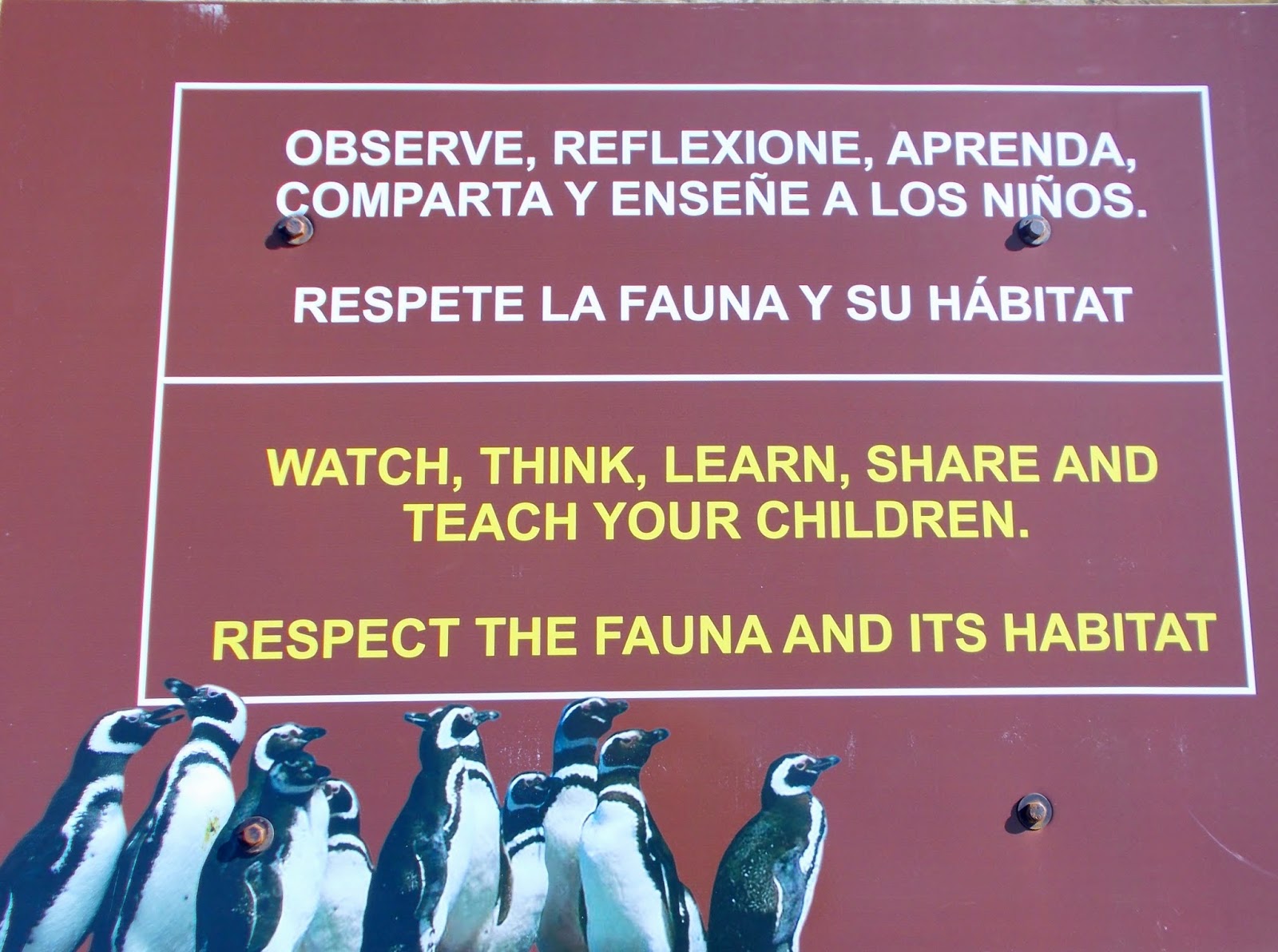The King penguin, Aptenodytes patagonicus, is the second largest species of penguin, the adult can be up to three feet tall and weight up to 35 pounds. Also is the most beautiful with its orange-gold patch on the neck and its long and slender body.
There is no denying the overall beauty of the king penguin.
They are usually found on the subantartic islands such as Falklands and South Georgia, remote and difficult to access however, fortunately, a number of King penguins are coming to Bahia Inútil, a bay in the Strait of Magellan, for reproduction hoping that they may create a new colony, actually archaeological records confirm that king penguins used to visit the costs of Tierra del Fuego centuries ago, in fact, the Selk'Nam, ancient inhabitants of the island known them and called them kéj'emkem. So today it is easily-accessible to observe king penguins in the wild in the Patagonia.
In the nineteen century the population of King penguin in Falkland Islands were estimated to be 6 million individuals however they were killed for their oil and their beautiful feather and their eggs taken for food, it is known that the Falkland islander's routine diet was commonly to eat penguin eggs every day of the year.
By 1870 they had been almost exterminated but today these penguins are protected by law and it is illegal to collect their eggs, as a result they increased in numbers. 2010 assessment estimated about 1000 breeding pairs in the island. The world population is estimated in more than million pairs.
Their reproduction is very slow.
The reproductive cycle begins during the southern spring, September-November, when eggs are laid.
Each female lay only 1 egg, they have no nests so the egg is incubated on the adult's feet. Both parents share the incubation of the egg in shifts of 6-18 days each, which takes 50-60 days to be completed.
Post-hatching the parents continue sharing the duty of care and feed their chicks for the first 16 months of life when they are mature enough to leave the parents.
Interesting facts about King penguins:
- The King penguins have a lower rate of monogamy than smaller penguin species.
- Females are more selective than males when choosing a mate, their choice seem to be based on their plumage.
- The plumage colour on the breasts and auricular areas are thought to reflect the health and age of the penguin, the healthier it is, the bright the plumage. The old it is, more vivid is its colouration.
- Although the King penguins have very little interaction in their environment they are very tolerant of human presence and are not alarmed by the presence of tourists.
- The main predator of King penguins are Leopard seals and Orcas (killer whales). Chicks and eggs prey to shore birds such Skuas and Giant Petrels.
- The age of these penguins is up to 20 years in the wild.
-They are fightless birds, very friendly and social with each other in their colony.
King Penguin Park
www.pinguinorey.com
In November 2011 the Parque Pinguino Rey was created, the aim is to conserve the ecosystem to ensure the protection of King penguin and other species that inhabit the Bahia Inútil sector and also to protect the Selk'Nam and Paleoindian archaeological resources.
Bahia Inútil (Useless Bay) is a bay in the Strait of Magellan, in the western part of Tierra del Fuego, Chilean territory.
The bay was named in 1827 by captain Phillip Parker King, Australian explorer (1791-1856), because he could not afford anchorage or shelter in that bay.
The bay is 60 Km in lenght and a width of 30 Km. Its extension and lack of protection puts the place at high wind from west and north. The beautiful River Marazzi, where the penguins use to stay, empties into the bay.
The tourism project is being managed by Turismo San Clemente that has unfolded a series of visiting programs considering that all visitors are interested in conservation and protection of the species. So has established a certain number of visitors, no more than 20 simultaneously, groups of 10-12 at most.
During the tour visitors are accompanied by park rangers and also can get information directly from one of the members of the conservation and research team involved in this exciting project.
If you wish to contact the conservation team send a e-mail to:
conservacion@pinguinorey.com
Information and booking a tour: www.comapa.com/en
www.turismoselknam.cl/en






































